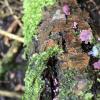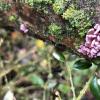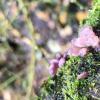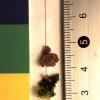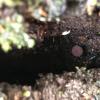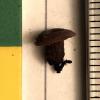
19-06-2013 21:14
 Björn Wergen
Björn Wergen
Hi there,during my vacation in Austria I have foun

23-06-2013 10:44
Gernot FriebesHi,I'm looking for PDFs or scans of:Ouellett, G. B

22-06-2013 15:32
Bonjour à tous,Quelqu'un aurait-il cet article?Le

22-06-2013 12:50
 Maren Kamke
Maren Kamke
Hi everybody,it should be something easy, I though

22-06-2013 01:27
Can anyone confirm this id or suggest a better one

20-06-2013 22:49
 Rubén Martínez-Gil
Rubén Martínez-Gil
Hola, de nuevo.Sobre ramitas y hojas de Quercus il
I have read that microscopy is better to distinguish the apothecia from A. cylinchnium. Is this the only similar species to consider, and is the brain-like anamorph only formed by A. sarcoides?
I include some photos from southern England, last year (20/11/2023), showing both morphs together on the fallen trunk of an unindentified angiosperm, possibly Betula, in mixed deciduous woodland.
Thanks in advance.

Thank you for answering, it seems the third traditional species you referred to must be A. albida (solitaria).
I do have another collection from the same day, a few minutes walk up a nearby stream. This was a solitary, small, purplish apothecium, on very damp and decayed wood that I suspect is Fraxinus excelsior.
I thought this may be an A. sp. too, although the habitat and habit seems a little different. I still have the dried apothecium but I haven't worked with dry material before and I guess it will be harder.



